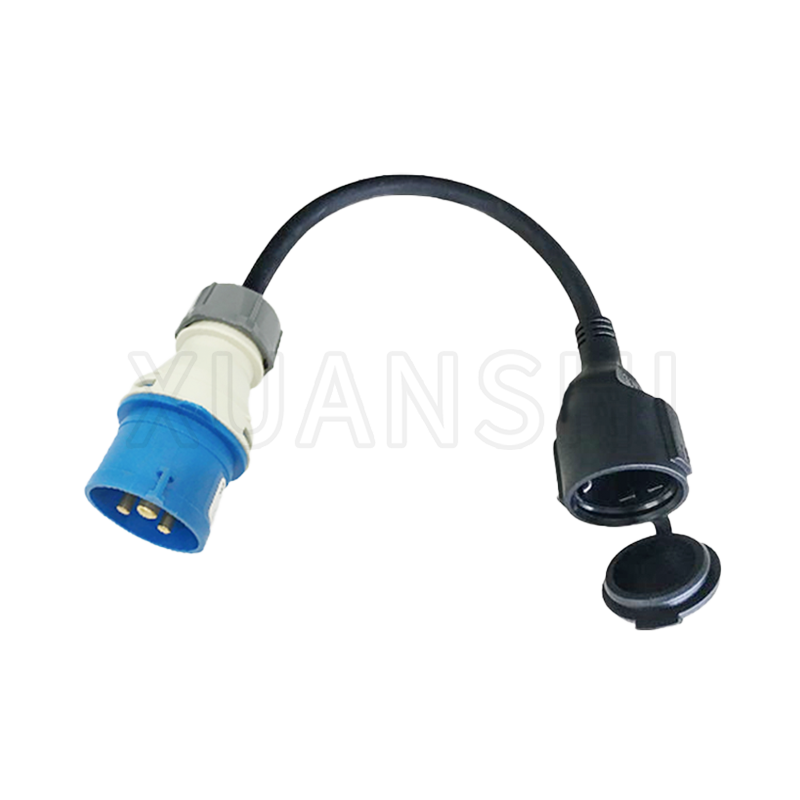Heat dissipation in socket power extension cords is crucial to prevent overheating, which can bring about electrical hazards such as fires or damage to connected devices. Here's how a high-quality extension cord typically handles heat dissipation:
Material Selection: High-quality socket power extension cords prioritize materials with sterling thermal conductivity and electrical properties. Copper, due to its low electrical resistance and high thermal conductivity, is commonly chosen for the conductors. The copper conductors efficiently transmit electricity while simultaneously dissipating heat generated during operation. PVC (Polyvinyl Chloride) is often selected for insulation due to its insulating properties and ability to withstand moderate temperatures.
Adequate Gauge: The gauge of the wire used in the extension cord plays a pivotal role in heat dissipation. A lower gauge number indicates thicker wires with larger cross-sectional areas, which have lower electrical resistance. Thicker wires can efficiently handle higher currents without excessive heat buildup. Therefore, selecting an extension cord with an appropriate gauge for the intended load is crucial to prevent overheating and ensure safe operation.
Insulation Quality: The insulation surrounding the conductors serves multiple critical functions, including electrical insulation and heat dissipation. High-quality insulation materials are carefully chosen to withstand the heat generated within the cord during operation. These materials not only prevent electrical conductivity but also act as a thermal barrier, limiting heat transfer to the surroundings. Insulation materials are selected based on their temperature rating to ensure they remain effective under normal operating conditions.
Design for Airflow: Some advanced socket power extension cords incorporate design elements to promote airflow around the conductors, enhancing heat dissipation. This may include strategic spacing between conductors or the inclusion of ventilation channels within the cord's structure. By facilitating airflow, these design features help dissipate heat more efficiently, reducing the risk of overheating and enhancing the overall safety and longevity of the extension cord.
Overload Protection: Extension cords equipped with built-in overload protection mechanisms offer an additional layer of safety against overheating. These mechanisms, such as fuses or circuit breakers, are designed to interrupt the electrical circuit if the current exceeds a predetermined threshold. By preventing excessive current flow, overload protection devices mitigate the risk of overheating and potential fire hazards. Users benefit from peace of mind knowing that their devices and electrical systems are safeguarded against overloads and electrical faults.
Temperature Ratings: All components used in socket power extension cords, including plugs, sockets, conductors, and insulation materials, are carefully selected based on their temperature ratings. These ratings indicate the peak temperature at which the components can safely operate without degradation or becoming a fire hazard. By adhering to strict temperature ratings, manufacturers ensure that the extension cord can withstand the heat generated during normal operation while maintaining positive safety and reliability.
Regular Inspection: Users are encouraged to perform periodic inspections of their socket power extension cords to detect any signs of damage or wear that could compromise their ability to dissipate heat effectively. Common inspection points include checking for frayed or exposed wires, damaged insulation, or overheating at connection points. Any extension cord exhibiting signs of damage should be promptly replaced to prevent safety hazards and ensure continued reliable performance. Regular inspections, coupled with proper maintenance and care, help prolong the lifespan of the extension cord and uphold safety standards in residential, commercial, and industrial environments.
IP44 industrial socket with Schuko plug JL-3Z,XS-GY005Z
